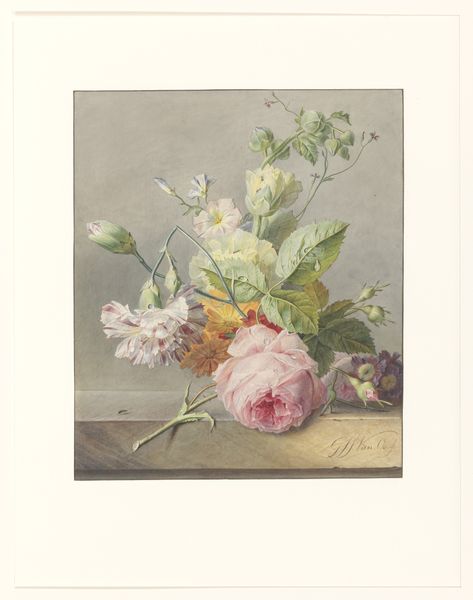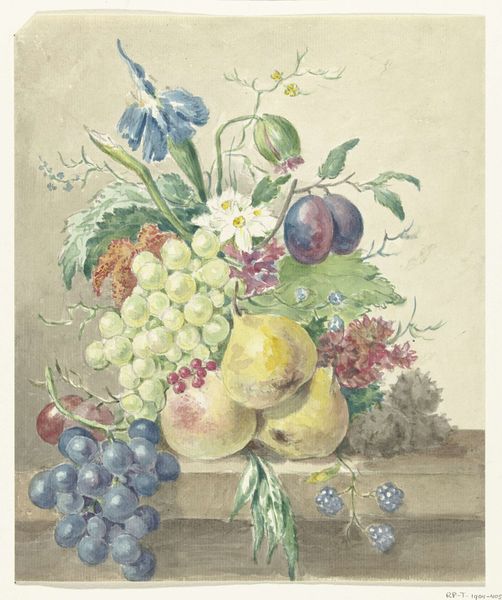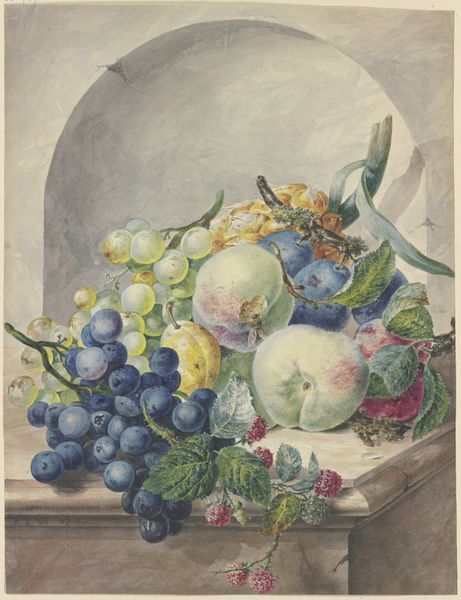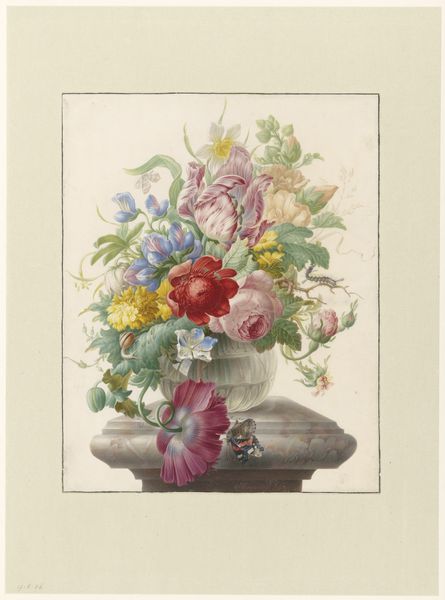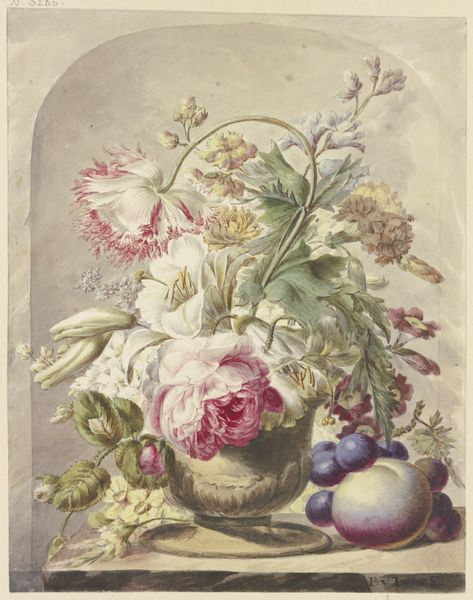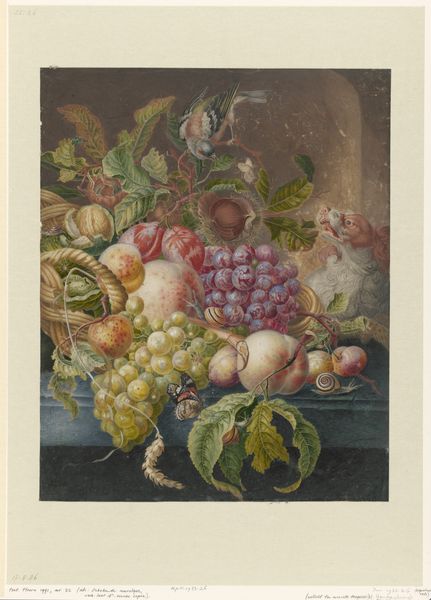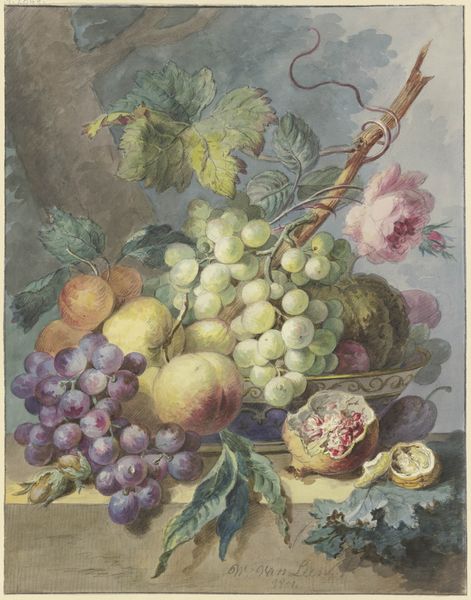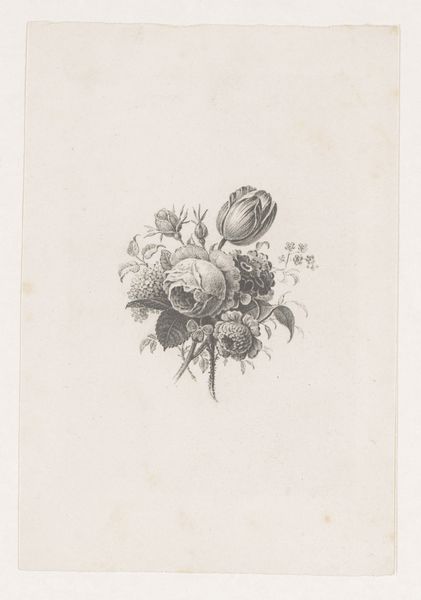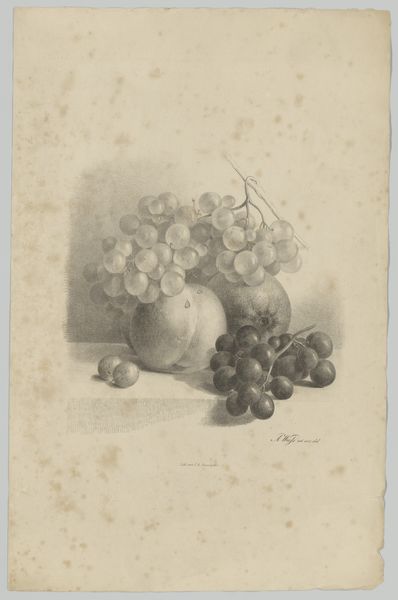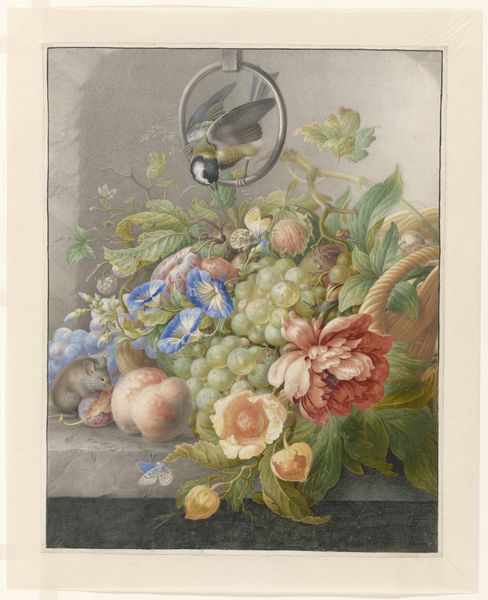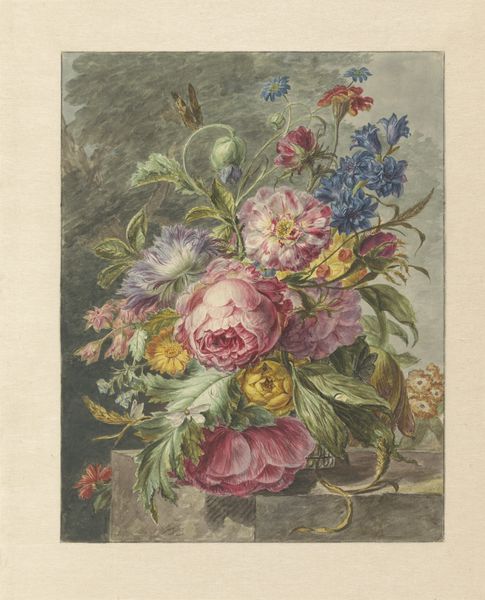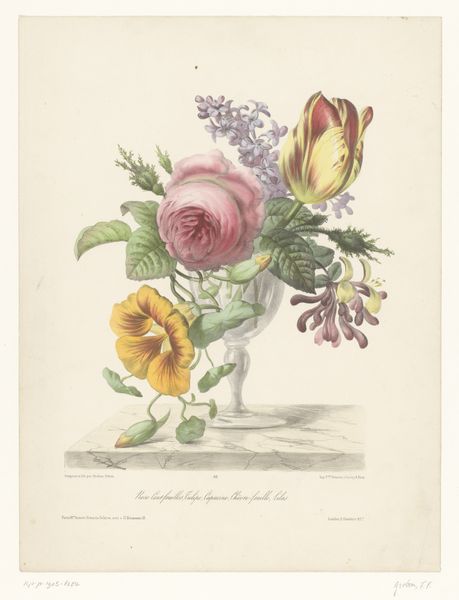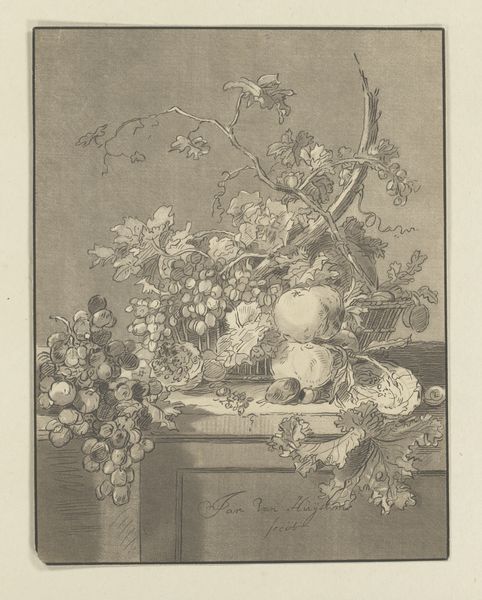
painting, watercolor
painting
landscape
watercolor
romanticism
academic-art
realism
Dimensions: height 288 mm, width 236 mm
Copyright: Rijks Museum: Open Domain
Curator: Today, we're observing Anthony Oberman's watercolor painting, "Still Life with Flowers and Fruit in a Basket," believed to have been created sometime between 1791 and 1845. Editor: The muted tones create a very gentle, almost melancholy mood. There's a textural richness though—the velvety peaches against the waxy grapes. It strikes me as being very carefully, deliberately arranged. Curator: Indeed. Consider the context of Oberman's life, positioned in a shifting European landscape as the merchant class rose, so, too, did their impact and commissions. Editor: How so? Is it just the expense that seems connected to wealth and commerce? Or is it something in the form itself? Curator: Precisely. The genre of still life gained prominence in this era alongside portraiture. These domestic arrangements offer insight into the patron's prosperity and the cultivation of bourgeois values of refined taste and order. Oberman reflects these evolving economic power structures. Notice how objects became statements, demonstrating wealth, access, and cultural affiliation. Editor: I agree that is evident. Though when you detach all of those things you pointed out, what's also evident is that it’s still just pigment, binders, paper, and the way the light hits things. There's something really quite lovely in those subtle gradients in the grapes. A commitment to portraying observed, and somewhat perfect form. Curator: Agreed. It invites discourse on art as propaganda and an act of visual documentation—a convergence that prompts questions on our comprehension of history. And how those of various classes might perceive the fruits within the context. Editor: Yes, and if we can use this piece as a window to examine social dynamics of the past, then maybe it gives us a glimpse into our own blindspots, now. Curator: Very much so, this analysis enables a re-evaluation of artistic expressions while fostering inclusivity within historical dialogue. Editor: Yes, thank you for bringing the relevant background into my own considerations.
Comments
No comments
Be the first to comment and join the conversation on the ultimate creative platform.
